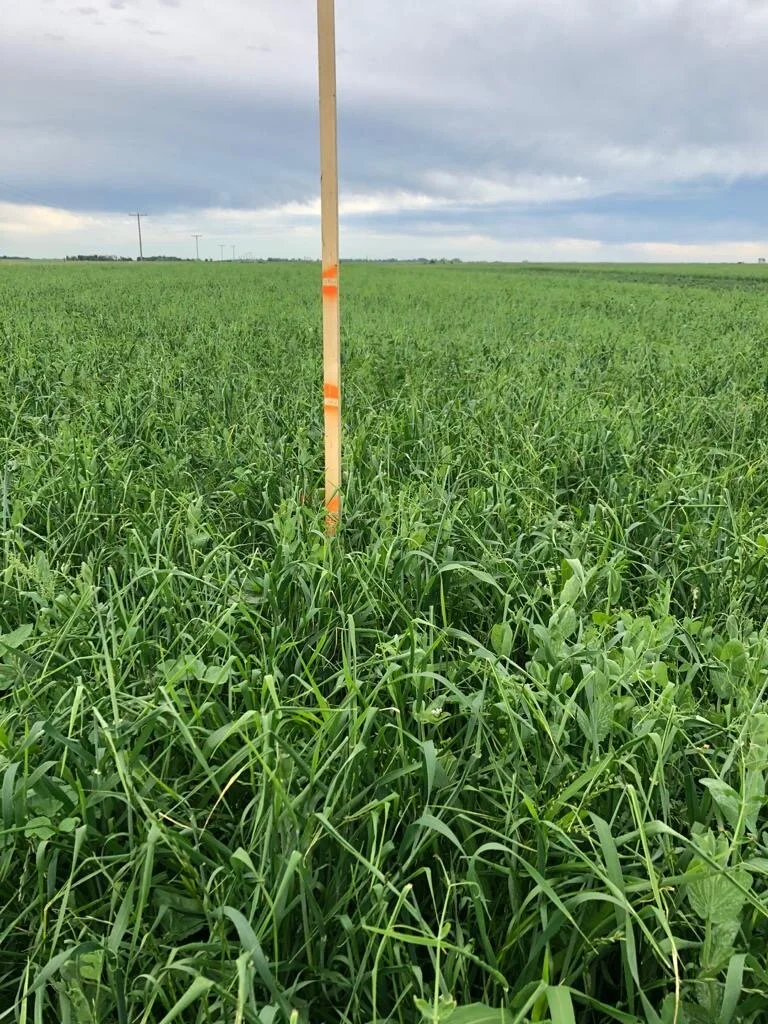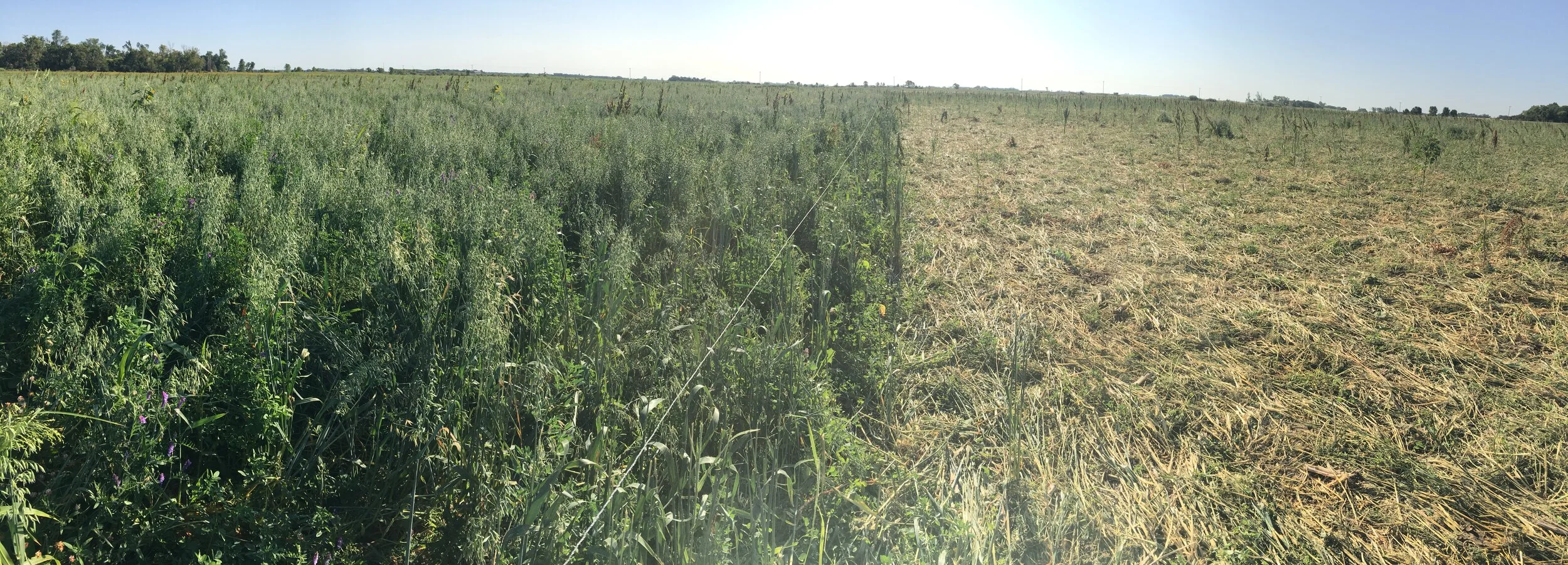Full Season Cover - Mob Grazing Protocol
Connecting Farmers To Soil Health
Hello, Friends.
I hope this email finds you well. Today, we will be quickly updating everyone on the grazing protocol for the full season cover.
Next week we will provide you with the Silage Best Practice’s Protocol.
Full Season Cover
Plant/Soil Symbiosis
As you can see from some of the pictures across the province, the full season has hit what is known as "symbiosis". That is to say, all established plants are working in symbiosis via root exudates, the mycorrhizal fungal network & soil biology.
Notice the difference in plant species (warm season/cool season) across different geographical areas (different environmental conditions throughout the growing season).
Full Season Cover
Mob Grazing protocol
The mob grazing protocol can be a bit unpredictable and you must make the decision for yourself. The trade-off goes as follows:
1. Turning the cows out earlier will result in smaller surface residue, but faster and more plentiful regrowth.
2. Turning the cows out when the crop is more mature will result in greater surface biomass, but much less regrowth.
Rotational grazing will always achieve the most desired results, and the more pounds per acre of live animal you can run per paddock, the greater the positive impact you will have on your soil.
• We would recommend making moves every 2-3 days (more frequent if possible)
• We would like to run a minimum of 20,000 Ibs/acre (15-20 cows/ac/day) stocking density in order for animals to create a vegetative residue on the soil surface. (as seen in the photos below)
Once the crop reaches symbiosis, the crop will grow rapidly. It is wise to turn the cows out earlier than later, to try and stay ahead of the rapid regrowth. The photos below show cows grazing the first paddock on two different crops.
In the first photo, the cows were turned out after the cool season plants had started to head, and the cows will have to run through quickly to keep up with the maturing crop.
In this second photo, it shows the first paddock grazed while all the crops are still vegetative. This makes managing the maturing crop a little easier. The desired time to start grazing the blend would be between the maturities of these two photos.
Full Season Cover
what to leave for residue?
Crop maturity can become a problem if the stock density is not high enough. If the crop is maturing faster than the cows can keep up, we would recommend running the livestock over the land as quickly as possible. Even if residue mat is not achieved with faster moves or bigger paddocks, the livestock will trim plants and set maturity back to a vegetative state, sequestering more carbon for the soil biology, optimizing re-growth potential.
The re-growth should be grazed again later in the fall, but be sure to leave 50% of biomass as residue.
The above photo would be an example of about the ideal maturity, to leave proper residue and maximize re-growth.
Full Season Cover
The Re-growth
2019 Regrowth (left photo): Grazing re-growth. Cool, wet fall was ideal for cool-season plants.
2018 Regrowth (right photo): Grazing re-growth. Last rainfall was July 7th. Most regrowth came from warm-season plants.
2019 Re-growth. Wet Fall = More Cool Season Plants
2018 Re-growth. Dry Fall = Warm Season Plants
Thanks For Reading
Let us know if you have any questions & you should look forward to an email updating those folks that will be utilizing the full season for silage next week.
If you have any pictures of your full season, please feel free to send our way!
To learn more about how we can help incorporate plant diversity into your operation:
Full Season Cover. Click Here
Warm Season Cover. Click Here
Fall Seeded Cover (Silage). Click Here
Fall Seeded Cover (Grain). Click Here
Intercrop Library. Click here
With Gratitude,
Covers & Co. Team
Joseph Gardiner, Travis Avery, Mark Fallis, Owen Taylor











